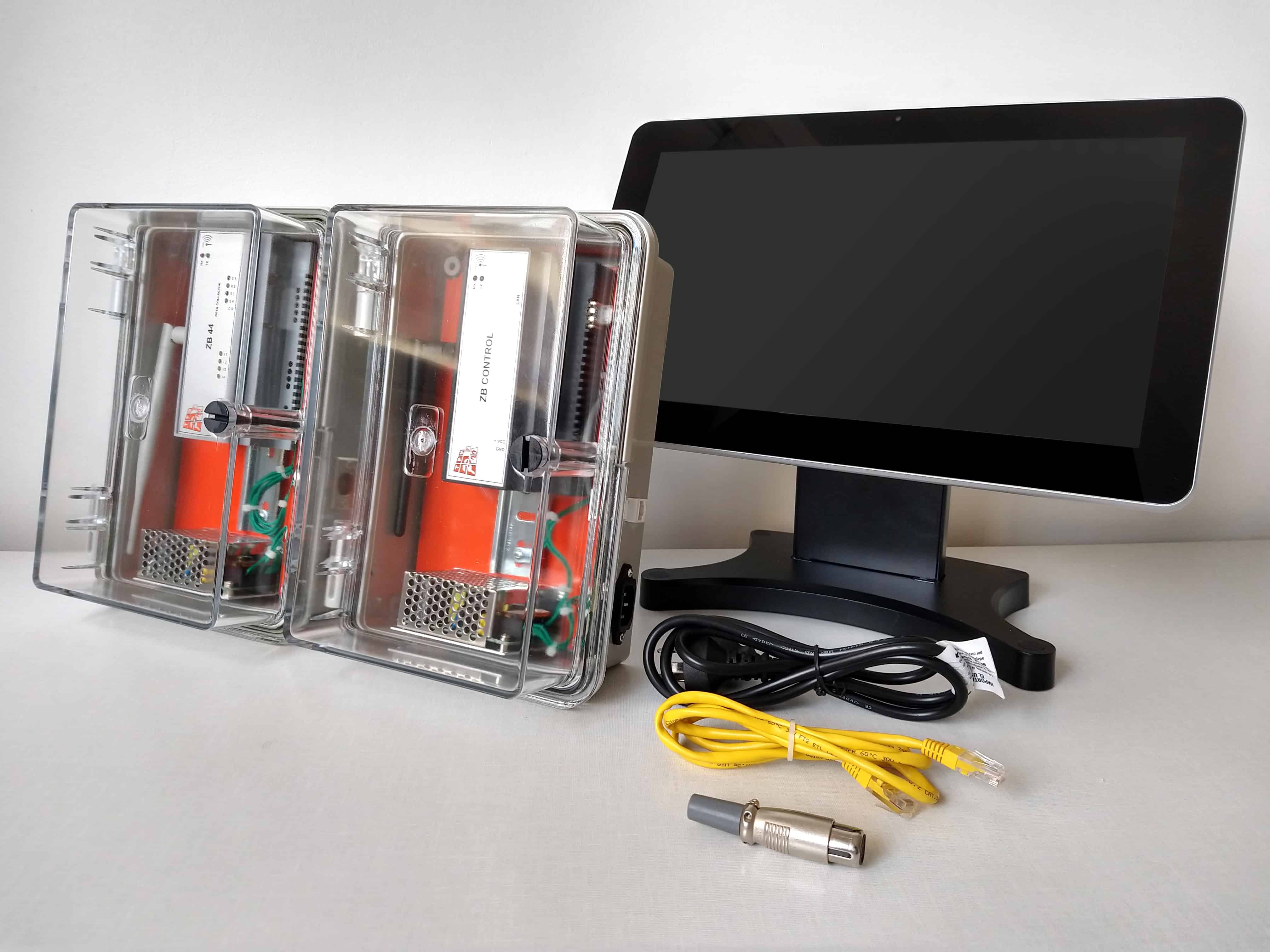Express OEE
Express OEE
TPM Pro Express OEE is a standalone system that let you measure and improve the efficiency of 4 single machines or 4 production lines.
All the software suite of applications is ready to use on the provided industrial Panel Pc.
One wireless data acquisition device with 4 digital inputs to connect 4 machines and one wireless data controller complete the offer.
TPM Pro Express OEE does not need implementation. Just replace defaults like losses and machine names for your own
Ready to run in less than 1 hour!

Kit OEE Express

Kit OEE Express
TPM Pro Express OEE is a standalone system that let you measure and improve the efficiency of 4 single machines or 4 production lines.
All the software suite of applications is ready to use on the provided industrial Panel Pc.
One wireless data acquisition device with 4 digital inputs to connect 4 machines and one wireless data controller complete the offer.
TPM Pro Express OEE does not need implementation. Just replace defaults like losses and machine names for your own.
Ready to run in less than 1 hour!
Mass production is usually the easiest to control since in these processes there are always sensors that measure what has been produced. For example, packaging or bottling lines, packaging processes, machines or high production lines, etc.
Batch processes can also be controlled, provided there is an electrical signal that indicates their operation. The more automated the process, the easier to measure and control. It is not the right system to measure the efficiency of manual processes.
In general, all machines or production lines already have a sensor that delivers that electrical signal (counter). It can be an optical, inductive type sensor, a relay contact, or taken from an output of a PLC or other control or counting device. Any of these alternatives is useful to use as a digital input to our Data Collectors.
In TPM Pro we have a lot of experience in connecting many different types of processes. Some of them are easy and others give a little more work and even in some cases require some special sensor that we can provide. The capacity of our Data Collectors allows to combine several inputs and create different logics to indicate the operation of the machine or the production of a unit.
Electronic devices such as PLCs are more dedicated to sequencing the operation of the line and controlling some of its variables. Although they were not designed for productivity measurement, a correct programming of them could achieve it. However, PLCs are normally embedded in the production line, and therefore, programming or reprogramming these devices generates downtime and can cause malfunction of the line if an error is made, with the consequent loss of the manufacturer's warranty.
Likewise, the current control devices are wired, most of them with a RS 232/422/485 serial connection or, in the best case, they use a socket from the LAN network. These wiring are always expensive because they require cable streets, work at height, distribution boxes, special mesh to eliminate electrical noise, etc. TPM Pro ZB Wireless Data Acquisition devices solve all these problems from end to end:
- They are Plug & Play.
- They do not interfere in the programming of the line (it is outside).
- No wiring required.
- Communications do not produce interference or suffer from electrical noise.
- They are cheaper than a conventional PLC.
- There is no need to deal with different manufacturers / device models.
Mass production is usually the easiest to control since in these processes there are always sensors that measure what has been produced. For example, packaging or bottling lines, packaging processes, machines or high production lines, etc.
Batch processes can also be controlled, provided there is an electrical signal that indicates their operation. The more automated the process, the easier to measure and control. It is not the right system to measure the efficiency of manual processes.
In general, all machines or production lines already have a sensor that delivers that electrical signal (counter). It can be an optical, inductive type sensor, a relay contact, or taken from an output of a PLC or other control or counting device. Any of these alternatives is useful to use as a digital input to our Data Collectors.
In TPM Pro we have a lot of experience in connecting many different types of processes. Some of them are easy and others give a little more work and even in some cases require some special sensor that we can provide. The capacity of our Data Collectors allows to combine several inputs and create different logics to indicate the operation of the machine or the production of a unit.
Electronic devices such as PLCs are more dedicated to sequencing the operation of the line and controlling some of its variables. Although they were not designed for productivity measurement, a correct programming of them could achieve it. However, PLCs are normally embedded in the production line, and therefore, programming or reprogramming these devices generates downtime and can cause malfunction of the line if an error is made, with the consequent loss of the manufacturer's warranty.
Likewise, the current control devices are wired, most of them with a RS 232/422/485 serial connection or, in the best case, they use a socket from the LAN network. These wiring are always expensive because they require cable streets, work at height, distribution boxes, special mesh to eliminate electrical noise, etc. TPM Pro ZB Wireless Data Acquisition devices solve all these problems from end to end:
- They are Plug & Play.
- They do not interfere in the programming of the line (it is outside).
- No wiring required.
- Communications do not produce interference or suffer from electrical noise.
- They are cheaper than a conventional PLC.
- There is no need to deal with different manufacturers / device models.


